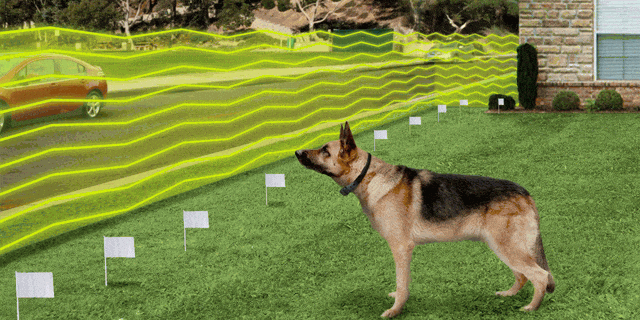

Unfortunately, as convenient as they might seem at first, Invisible Fence-type systems have a number of significant drawbacks. Sometimes, there are no perfect solutions – all we can do is our best. I understand this, and I have empathy for these situations. Physical fencing is also quite expensive, as anyone who has priced it knows! For many families, especially if they have a large yard, putting up a chain link or wooden fence for their dog is simply not an option due to cost. Some subdivisions have strict rules against any type of fencing – homeowners may not realize this until after they’ve moved in and added a dog to the family. Why not just use a “real” fence, you might ask? The fact is, this isn’t always possible. These are valid goals, meant to make the dog’s life better. They want to give their energetic pup more off-leash freedom to run and play, or let their older dog have access to the yard for potty breaks when they’re not home. From your dog’s perspective, these systems all work the same way – using a warning tone, and then a shock, to enforce the chosen boundary.īy and large, most dog owners who use an Invisible Fence do so with the best of intentions. Ideally, the dog learns where the boundary line is after a few unpleasant experiences, and therefore stays in the yard.Īs technology has advanced, there are now some variations available on this same basic idea – wireless systems that cover a circular area up to a certain distance from the transmitter, and even GPS-based models that allow you to “enclose” very large or irregularly-shaped swaths of land. As your dog approaches the boundary line, the collar gives a warning beep, followed by a shock if he continues to move closer. An underground wire is installed around your yard (or other designated area), which emits a signal that is picked up by a collar worn by your dog. “Invisible Fence“ is actually a specific brand of something called an underground containment system for dogs.

Just to make sure we’re all on the same page, let’s start by briefly discussing what we mean when we use this term. What is an Invisible Fence, and how does it work? I hope you’ll use this information to help decide on the best choice for your living situation, and your individual dog – whatever that choice might be. Instead, what I want to do today is provide a thoughtful, science-based overview of how these fences work, the pros and cons of using them, and potential risks that you should be aware of. And truthfully, for some of my clients, I have seen them work quite well without any apparent problems. My goal for today’s post is not to convince you that Invisible Fences are an inherently evil invention, or to make you feel like a bad person or dog owner if you’re currently using one. We will discuss the reasons for this below.

Regarding what I think of Invisible Fences, personally, the short answer is that I am not a huge fan.

It’s fine to have differing views, as long as we’re all respectful of each other. I want to acknowledge at the outset that this this can be a hot-button issue for many dog owners and trainers, with strong feelings on all sides – and that’s perfectly okay. Today, I want to discuss a topic that I (and every other dog trainer I know!) get lots of questions about.Īre “Invisible Fence”-type containment systems a good idea, generally speaking? Or, would this be a reasonable choice for your particular dog?


 0 kommentar(er)
0 kommentar(er)
